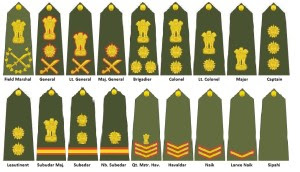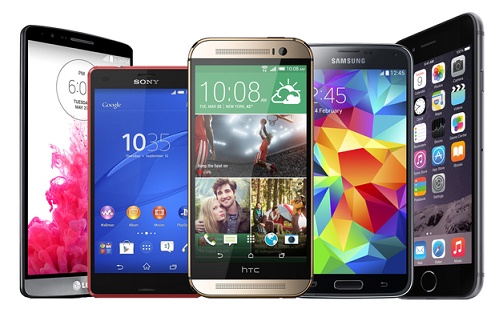
List of Countries where India shares its Political Borders!
India
shares its political borders with other countries. Pakistan and
Afghanistan on the west and Bangladesh and Myanmar on the east. The
northern boundary is made up of the Sinkiang province of China, Tibet,
Nepal and Bhutan. India is seperated from Sri Lanka by a narrow channel
of sea formed by the Palk Strait and Gulf of Mannar.
1) Indo Pak Border : Recognise one of the high tense border around around the world, India shares 3,323 Km (including Line of Control in Jammu & Kashmir sector) of its land border with Pakistan. This border runs along the States of Gujarat, Rajasthan, Punjab and Jammu & Kashmir. Jammu & Kashmir share longest length with 1225 km out of 3,323 and Gujrat 508 km. Border Security Force (BSF) of India is presently manning 609 Border Out Posts (BOPs) on Indo-Pakistan border. In order to prevent illegal immigration and other anti-national activities from across the border, Government of India has sanctioned erection of fencing along Indo-Pakistan border. The border is running from the Line of Control (LoC), which separates the Indian Jammu Kashmir and Azad Kashmir of Pakistan, in the north, to Wagha line, which partitioned the Indian Punjab state and Punjab Province of Pakistan, in the eastward.
2) Indo Afgan Border : Officially India does share a small stretch of border with Afghanistan, however that is in Kashmir which is occupied by Pakistan, currently. Historically Afghans do come to India for trade it was an old trade root which has died out to a great extent now but it is still there. Durand Line is the line demarcating the boundaries of India and Afghanistan. It was drawn up in 1896 by Sir Mortimer Durand. At present this boundary lies in POK (Pakistan occupied Kashmir).
3) Indo China Border : India shares 3,380 km with China. Arunachal Praseh, Jammu and Kashmir, Himachal Pradesh. Arunachal Pradesh shares a 1046 km border with China. McMahon Line is a line agreed to by Britain and Tibet as part of the Simla Accord, a treaty signed in 1914. It is the effective boundary between China and India, although its legal status is disputed by the Chinese government.
4) Indo Bangla Border : India shares 4,096.7 Km of its land border with Bangladesh. West Bengal, Assam, Meghalaya, Tripura and Mizoram are the States which share the border with Bangl adesh. West Bengal share longest length with 2216.70 km out of 4,096.7 and Mizoram 318 km. The Bangladeshi Divisions of Dhaka, Khulna, Rajshahi, Rangpur, Sylhet and Chittagong share border with Indian Territories. A number of pillars mark the border between the two states. Small demarcated portions of the border are fenced on both sides. The entire stretch consists of plain, riverine, hilly/jungle and with hardly any natural obstacles. The area is heavily populated, and the cultivation is carried out till the last inchof the border at many stretches. Border Security Force (BSF) of India is presently manning 802 Border Out Posts (BOPs) on Indo-Bangla border.
5) Indo Myanmar Border : India shares a 1643 km long border with Myanmar. Arunachal Pradesh, Nagaland, Manipur and Mizoram are the States, which share the border with Myanmar. Arunachal Pradesh share longest length with 520 km out of 1643 and Mizoram 510 km. Assam Rifles has been deployed for counter-insurge ncy and border guarding role on this border.
6) Indo Srilanka Border : Srikanka is border to India in south. The 18 miles (30 km) long Adam's Bridge also known as Rama's Bridge or Rama Setu is a chain of limestone shoals, between Pamban Island, also known as Rameswaram Island, off the southeastern coast of Tamil Nadu, India, and Mannar Island, off the northwestern coast of Sri Lanka. Geological evidence suggests that this bridge is a former land connection between India and Sri Lanka. The border between India and Sri Lanka is said to pass across one of the shoals constituting one of the shortest land borders in the world. Adam's bridge and neighbouring areas like Rameswaram, Dhanushkodi, Devipattinam and Thirupullani are mentioned in the context of various legends in Ramayana.
7) Indo Nepal Border : Nepal is sharing its 1,236 km (768 mi) border with various Indian states like Bihar, Sikkim, Uttar Presdh. The Indo-Nepal border is open, Nepalese and Indian nationals may move freely across the border without passports or visas and may live and work in either country. So far as the Indo-Nepal border demarcation is concerned, Nepal-India Joint Technical Level Boundary Committee is working for the last 21 years (since 15 November 1981). But the boundary business is not yet completed. There are three main crossing points to Nepal: Sunauli-Bhairawa, Birganj-Raxaul and Kakarbhitta-Silguri. The Sunauli border crossing is the best one from Varanasi, the Birgunj crossing is the easiest from Calcutta; and Kakarbhitta is the best crossing from Darjeeling.
8) Indo Bhutan Border : India shares a 699 Km long border with Bhutan along Sikkim, West Bengal, Assam and Arunachal Pradesh. Assam share longest length with 267 km out of 699 km and Sikkim 32 km. To improve the security environment along this border, 12 battalion of Sashastra Seema Bal (SSB) have been deployed as the Border Guarding Force on this border. The border between Bhutan and India is the only land access into entering Bhutan, as the border with China is completely closed. The single entry point for foreign nationals is between the towns of Jaigaon in the Indian state of West Bengal and Phuntsholing, in South West Bhutan.
1) Indo Pak Border : Recognise one of the high tense border around around the world, India shares 3,323 Km (including Line of Control in Jammu & Kashmir sector) of its land border with Pakistan. This border runs along the States of Gujarat, Rajasthan, Punjab and Jammu & Kashmir. Jammu & Kashmir share longest length with 1225 km out of 3,323 and Gujrat 508 km. Border Security Force (BSF) of India is presently manning 609 Border Out Posts (BOPs) on Indo-Pakistan border. In order to prevent illegal immigration and other anti-national activities from across the border, Government of India has sanctioned erection of fencing along Indo-Pakistan border. The border is running from the Line of Control (LoC), which separates the Indian Jammu Kashmir and Azad Kashmir of Pakistan, in the north, to Wagha line, which partitioned the Indian Punjab state and Punjab Province of Pakistan, in the eastward.
2) Indo Afgan Border : Officially India does share a small stretch of border with Afghanistan, however that is in Kashmir which is occupied by Pakistan, currently. Historically Afghans do come to India for trade it was an old trade root which has died out to a great extent now but it is still there. Durand Line is the line demarcating the boundaries of India and Afghanistan. It was drawn up in 1896 by Sir Mortimer Durand. At present this boundary lies in POK (Pakistan occupied Kashmir).
3) Indo China Border : India shares 3,380 km with China. Arunachal Praseh, Jammu and Kashmir, Himachal Pradesh. Arunachal Pradesh shares a 1046 km border with China. McMahon Line is a line agreed to by Britain and Tibet as part of the Simla Accord, a treaty signed in 1914. It is the effective boundary between China and India, although its legal status is disputed by the Chinese government.
4) Indo Bangla Border : India shares 4,096.7 Km of its land border with Bangladesh. West Bengal, Assam, Meghalaya, Tripura and Mizoram are the States which share the border with Bangl adesh. West Bengal share longest length with 2216.70 km out of 4,096.7 and Mizoram 318 km. The Bangladeshi Divisions of Dhaka, Khulna, Rajshahi, Rangpur, Sylhet and Chittagong share border with Indian Territories. A number of pillars mark the border between the two states. Small demarcated portions of the border are fenced on both sides. The entire stretch consists of plain, riverine, hilly/jungle and with hardly any natural obstacles. The area is heavily populated, and the cultivation is carried out till the last inchof the border at many stretches. Border Security Force (BSF) of India is presently manning 802 Border Out Posts (BOPs) on Indo-Bangla border.
5) Indo Myanmar Border : India shares a 1643 km long border with Myanmar. Arunachal Pradesh, Nagaland, Manipur and Mizoram are the States, which share the border with Myanmar. Arunachal Pradesh share longest length with 520 km out of 1643 and Mizoram 510 km. Assam Rifles has been deployed for counter-insurge ncy and border guarding role on this border.
6) Indo Srilanka Border : Srikanka is border to India in south. The 18 miles (30 km) long Adam's Bridge also known as Rama's Bridge or Rama Setu is a chain of limestone shoals, between Pamban Island, also known as Rameswaram Island, off the southeastern coast of Tamil Nadu, India, and Mannar Island, off the northwestern coast of Sri Lanka. Geological evidence suggests that this bridge is a former land connection between India and Sri Lanka. The border between India and Sri Lanka is said to pass across one of the shoals constituting one of the shortest land borders in the world. Adam's bridge and neighbouring areas like Rameswaram, Dhanushkodi, Devipattinam and Thirupullani are mentioned in the context of various legends in Ramayana.
7) Indo Nepal Border : Nepal is sharing its 1,236 km (768 mi) border with various Indian states like Bihar, Sikkim, Uttar Presdh. The Indo-Nepal border is open, Nepalese and Indian nationals may move freely across the border without passports or visas and may live and work in either country. So far as the Indo-Nepal border demarcation is concerned, Nepal-India Joint Technical Level Boundary Committee is working for the last 21 years (since 15 November 1981). But the boundary business is not yet completed. There are three main crossing points to Nepal: Sunauli-Bhairawa, Birganj-Raxaul and Kakarbhitta-Silguri. The Sunauli border crossing is the best one from Varanasi, the Birgunj crossing is the easiest from Calcutta; and Kakarbhitta is the best crossing from Darjeeling.
8) Indo Bhutan Border : India shares a 699 Km long border with Bhutan along Sikkim, West Bengal, Assam and Arunachal Pradesh. Assam share longest length with 267 km out of 699 km and Sikkim 32 km. To improve the security environment along this border, 12 battalion of Sashastra Seema Bal (SSB) have been deployed as the Border Guarding Force on this border. The border between Bhutan and India is the only land access into entering Bhutan, as the border with China is completely closed. The single entry point for foreign nationals is between the towns of Jaigaon in the Indian state of West Bengal and Phuntsholing, in South West Bhutan.






































